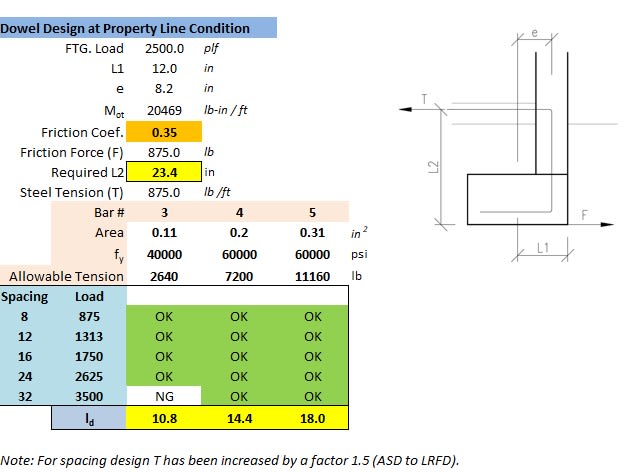rcast044
Structural
- Dec 18, 2018
- 19
So my concern is the Florida Building Codes monolithic footer. I am applying a 5 kip load from the truss above down to the monolithic footer. Well, technically it is applied at a 4.25" eccentricity (12" width - 4.25" to center of sill plate). However, if you take this eccentricity into account, the footer definitively fails even on low loads. I was wondering, what was your guys way of analyzing this specific foundation? See attachment for picture.

